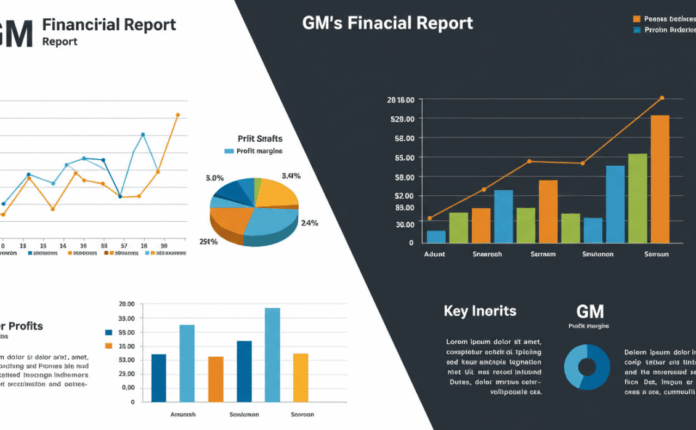In July 2025, President Donald Trump signed the One Big Beautiful Bill Act (OBBBA), a landmark piece of legislation that has ignited a wave of enthusiasm among American businesses. Dubbed the “big, beautiful bill” by Trump himself, this sweeping tax and spending package promises to reshape the economic landscape by incentivizing capital investment, boosting job creation, and fostering a business-friendly environment. From small manufacturers to tech giants, companies across the spectrum are seizing the opportunity to expand operations, modernize equipment, and drive innovation. But what exactly does this bill entail, and how is it fueling such a remarkable investment surge? Let’s dive into the details and explore the ripple effects of this transformative legislation.
Understanding the One Big Beautiful Bill Act
A Game-Changer for Business Investment
The OBBBA, signed into law on July 4, 2025, is a comprehensive package that extends and expands the tax cuts introduced in the 2017 Tax Cuts and Jobs Act. One of its cornerstone provisions is the ability for businesses to fully expense capital expenditures (capex) retroactively from January 2025. This means companies can immediately deduct the full cost of new equipment, machinery, and infrastructure investments, rather than depreciating them over time. According to the Treasury Department, this provision has already led to a 16.6% increase in business capital expenditures in the first half of 2025, with business equipment production rising 11% in the second quarter alone. This surge marks the strongest non-pandemic gain since 1997, signaling a robust “capex comeback” as described by Trump’s administration.
Tax Breaks and Incentives for Growth
Beyond capital expensing, the bill makes permanent several tax breaks from 2017, including a 21% corporate tax rate and a 23% deduction for pass-through businesses, which benefits small and medium-sized enterprises. It also reinstates immediate expensing for research and development (R&D) costs, a move that has tech companies and manufacturers buzzing with excitement. For instance, small businesses in the supply chain, such as those in the logging and energy sectors, are now planning expansions thanks to the certainty provided by these tax policies. The bill also introduces incentives for companies operating in “America First Economic Zones,” encouraging domestic production and job creation. These measures are designed to keep capital in the U.S., with tariffs playing a complementary role by incentivizing foreign companies to invest locally.
Impact on American Businesses
Small Businesses: The Backbone of the Boom
Small businesses, often referred to as the backbone of the American economy, are among the biggest beneficiaries of the OBBBA. The increased Section 199A deduction and doubled small business expensing limits provide much-needed financial relief. Toni McAllister, executive director of the Louisiana Loggers Association, noted that the bill lowers effective tax rates for small producers, allowing them to “not just survive, but grow and succeed.” Similarly, the National Federation of Independent Business has praised the legislation for preventing a massive tax hike on Main Street, enabling small firms to invest in new facilities and hire more workers. This newfound confidence is translating into tangible growth, with small manufacturers and family-owned businesses leading the charge.
Big Corporations and Strategic Investments
Large corporations are also capitalizing on the OBBBA’s provisions. The American Bankers Association has voiced strong support, citing the bill’s tax relief as a catalyst for economic growth. Companies like Nippon Steel are investing heavily in U.S. facilities, such as U.S. Steel’s plants, while tech firms are eyeing R&D deductions to fuel innovation. For example, Sam Palmeter, an executive at a U.S.-based laser technology company, stated that the tax cuts will allow his firm to double its manufacturing space and create new jobs. However, the bill’s impact on Big Tech has been mixed, as an AI-related moratorium was removed, prompting debates about its implications for tech innovation. Despite this, the restoration of R&D expensing is expected to benefit tech giants like Alphabet and Amazon, which faced higher tax bills when deductions were phased out.
Energy Sector: A Fossil Fuel Focus
The energy sector is another major winner, particularly oil, gas, and coal industries. The OBBBA fast-tracks fossil fuel projects and enhances carbon capture tax credits, which incentivize oil production. Mike Sommers, president of the American Petroleum Institute, called the bill “transformational” for its access to federal lands and waters. However, this focus comes at the expense of renewable energy, as the bill phases out clean energy tax credits for solar and wind by 2028. Critics, including the Solar Energy Industries Association, warn that this could slow the growth of renewables, potentially leading to higher energy costs and reduced competitiveness in the global AI race.
Economic Implications and Concerns
A Short-Term Economic Boost

The immediate impact of the OBBBA is undeniable: it’s injecting rocket fuel into the U.S. economy. Analysts from Citi and Nomura predict that the bill’s tax cuts and incentives will avert a fiscal contraction in 2026, boosting growth sentiment in the near term. The Council of Economic Advisers estimates a potential GDP growth of 5.2% in the short run and 3.5% in the long run, with over four million jobs created over time. This optimism is reflected in the stock market, where sectors like industrials, energy, and defense are seeing gains. However, the bill’s long-term effects are less certain, with concerns about fiscal sustainability looming large.
Rising National Debt and Inflation Risks
Critics, including the Committee for a Responsible Federal Budget, warn that the OBBBA could add $3.4 trillion to the national debt over the next decade. This increase could push Treasury yields above 5%, raising borrowing costs for businesses and consumers alike. Higher interest rates may also strain the federal budget, with interest costs already surpassing $1 trillion annually. Moreover, injecting demand into an already tight economy risks reigniting inflation, especially as tariffs raise input costs. The Congressional Budget Office (CBO) projects that the bill’s Medicaid cuts and clean energy rollbacks could leave over 10 million Americans uninsured by 2034, adding to economic and social pressures.
Sector-Specific Impacts: Tech and Manufacturing
Tech Industry: A Mixed Bag
While the OBBBA restores R&D deductions, a boon for tech companies, it falls short in other areas. The removal of a proposed AI moratorium was hailed as a victory by groups like the Article III Project, which argued it prevented Big Tech from gaining excessive control. However, the bill’s elimination of electric vehicle (EV) tax credits and clean energy incentives could hinder tech-driven sustainability efforts. As electricity demand surges due to AI data centers and reindustrialization, the U.S. risks falling behind in the global AI race if renewable energy development slows. Tech-backed groups like the Information Technology and Innovation Foundation continue to advocate for balanced policies to support innovation.
Manufacturing: A Renaissance in the Making
The manufacturing sector is poised for a renaissance, thanks to the OBBBA’s focus on domestic production. Jay Timmons, president of the National Association of Manufacturers, emphasized that the bill’s tax incentives are “rocket fuel” for job creation and investment. From steel to laser technology, manufacturers are planning to build new plants and modernize existing ones. The bill’s emphasis on “Made in America” policies, including deductions for American-made vehicle purchases, is encouraging companies to relocate operations to the U.S. This trend is particularly evident in red states like Louisiana, where oil and gas firms are thriving, though Medicaid cuts pose challenges for local communities.
What This Means for the Future
The OBBBA is a bold bet on supply-side economics, aiming to supercharge growth by empowering businesses to invest and innovate. While the short-term outlook is promising, with companies across sectors ramping up spending, the long-term risks—rising debt, inflation, and reduced support for renewables—cannot be ignored. For businesses, the bill offers a rare opportunity to capitalize on tax breaks and expand operations, but strategic planning will be crucial to navigate potential economic headwinds. For consumers, the benefits of job creation and wage growth may be tempered by higher costs in healthcare and energy. As the U.S. economy enters this new chapter, the OBBBA’s legacy will depend on how well it balances growth with sustainability.

FAQs
What is the One Big Beautiful Bill Act?
The One Big Beautiful Bill Act (OBBBA) is a comprehensive tax and spending package signed into law by President Donald Trump on July 4, 2025. It makes permanent the 2017 Tax Cuts and Jobs Act, introduces new tax breaks for businesses and individuals, and includes provisions for border security, defense, and energy development. It aims to boost economic growth but has raised concerns about increasing the national debt.
How does the bill benefit businesses?
The bill allows businesses to fully expense capital expenditures, reinstates R&D deductions, and maintains a 21% corporate tax rate. It also offers incentives for companies in “America First Economic Zones” and supports domestic manufacturing, leading to a 16.6% increase in capital expenditures in 2025.
Which sectors are most impacted by the OBBBA?
Manufacturing, energy (particularly oil and gas), and small businesses benefit significantly due to tax incentives and deregulation. However, the renewable energy sector faces challenges due to the phase-out of solar and wind tax credits by 2028. The tech industry sees mixed outcomes, with R&D deductions as a win but setbacks in clean energy support.
What are the risks associated with the bill?
The bill is projected to add $3.4 trillion to the national debt over a decade, potentially raising interest rates and inflation. Cuts to Medicaid and clean energy incentives could leave millions uninsured and slow renewable energy growth, impacting long-term economic and environmental sustainability.
How does the bill affect consumers?
Consumers may benefit from tax breaks, such as no tax on tips (up to $25,000) and overtime (up to $12,500), and an increased child tax credit. However, cuts to Medicaid and SNAP could increase healthcare and food costs for low-income households, and higher energy prices may result from reduced renewable energy support.



